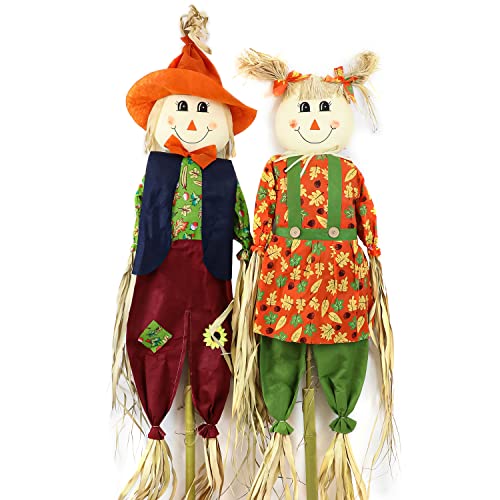Scarecrows: Do they actually work in repelling birds?
Scarecrows have been a common sight in fields and gardens for centuries. These human-like figures are typically dressed in old clothes and positioned in areas where birds tend to gather. The purpose of a scarecrow is to frighten away birds and protect crops from being damaged. But are scarecrows actually effective in repelling birds? Let’s take a closer look.
The psychology behind scarecrows
Scarecrows work on the principle of visual deterrents. Birds, like many animals, have a natural fear of predators. When they encounter a scarecrow, they see it as a potential threat and are scared away. The idea is that the presence of a scarecrow will create anxiety among birds and deter them from landing or feeding in the protected area.
Limitations of scarecrows
While scarecrows can be effective to a certain extent, they do have their limitations. One of the main challenges is the adaptability of birds. Over time, birds can become accustomed to the presence of scarecrows and may start to ignore them. They learn that scarecrows do not pose any real danger, especially if they do not move or make any noise.
Another limitation of scarecrows is that they are only effective during the day. Many bird species are primarily active at night, so a scarecrow does not offer much protection during that time. In addition, scarecrows do not provide a physical barrier, which means that determined birds can still find ways to access the crops or gardens despite their presence.
Enhancing scarecrow effectiveness
There are ways to enhance the effectiveness of scarecrows in repelling birds. One common technique is to make the scarecrow more lifelike by adding movement. This can be achieved by attaching objects or using wind-powered devices that make the scarecrow appear more dynamic. The movement can startle and deter birds, making them less likely to approach the protected area.
Another technique is to regularly change the appearance of the scarecrow. Birds are more likely to become accustomed to a stationary object, so by regularly changing its appearance, the scarecrow remains unpredictable and continues to have a deterrent effect.
Alternative bird repellents
While scarecrows have been a traditional method of bird control, there are also alternative repellents available. Some farmers and gardeners opt for reflective materials, such as aluminum foil or strips, to create flashes of light that birds find intimidating and bothersome.
Another option is the use of bird repellent sounds. These devices emit high-pitched noises or bird distress calls that birds find irritating. The idea is to create an environment that birds find uncomfortable and want to avoid.
In conclusion
Scarecrows can be effective at repelling birds, but their success depends on various factors such as the species of birds, their level of familiarity with scarecrows, and the environment in which they are deployed. To maximize their effectiveness, scarecrows should be supplemented with additional deterrent techniques like movement, regular changes in appearance, reflective materials, or bird repellent sounds. However, it is important to note that no single method is foolproof, and a combination of approaches may be necessary to achieve the desired results in bird control.






